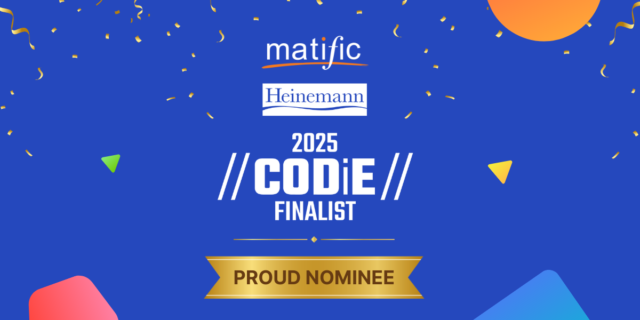Julie Nora is a Heinemann Fellow with the 2014–2016 class, and has been an educator for 24 years. In today's post, Julie discusses integrating technology with her specific set of classrooms.
Julie Nora is a Heinemann Fellow with the 2014–2016 class, and has been an educator for 24 years. In today's post, Julie discusses integrating technology with her specific set of classrooms.

by Julie Nora
What happens when children write for an authentic, global audience?
When you walk into the International Charter School (ICS), you are immediately struck by the sights and sounds of our diverse community. At any given time, Spanish, English and Portuguese are heard throughout our halls, as all of our students are learning through either a Spanish/English or Portuguese/English dual language program. Our families represent more than forty countries. Fifty percent of our students identify as Latinos, one third identify as African American, representing mostly a Cape Verdean population. Fifty percent of our students are English Language Learners (ELLs)—proficient in Spanish or Portuguese. Sixty percent of our students live in poverty. Similar to dual language schools across the globe, our goals are for students to become bilingual and biliterate, perform on grade level in all academic areas, and develop positive cross cultural attitudes and behaviors.
This linguistically and culturally rich environment—where I am the Director—is the context for my Heinemann Fellows research project. I am interested in leveraging Information and Communication Technology (ICT) to extend teaching and learning, providing opportunities for students to engage in authentic writing tasks, and finding meaningful opportunities for students to use their multiple languages with authentic audiences.
In integrating technology into school, Alan November distinguishes between automating, where we merely “bolt technology onto existing procedures and practices,” and informating, which creates opportunities for empowerment through new sources of information and relationships. This year, ICS students will be taking their state assessments online, a perfect example of automating—bolting technology onto our existing practice of taking standardized tests. Many argue that introducing online assessments to schools is perhaps the only way to force schools to integrate technology into teaching and learning.
As an administrator, I loathe the prospect of online standardized tests becoming the main way we integrate technology into teaching and learning. I would prefer to informate rather than simply automate, and to this end, I am partnering with the fourth grade classroom and technology teachers to study this question, “How will having an authentic writing task for global audiences (through a blog/internet) impact student engagement and quality in writing in a dual language setting?”
Students report they prefer writing on a tablet or computer
I have just begun to collect data, starting with a survey about technology. Ninety-six percent of our students have access to the internet at home. While that seems promising, we need to be more proactive in increasing internet access (for those who don't have it) so that the growing use of technology in schools does not disadvantage children in new ways and amplify the socioeconomic disparity between the rich and poor.
More students have access to a tablet or mobile phone than to a computer, not surprising considering phones and tablets are cheaper and more mobile than desktop or laptop computers. Students report they prefer writing on a tablet or computer, however most school tasks and online assessments require students to use technology differently than they do at home. How can we leverage the access they do have to make better connections between school and home? How can we provide access when they do not have it?
I have also given students an initial writing attitudes survey where their sense of self as writers often emphasized neatness, spelling and grammar. However, in a subsequent free write, students listed a multitude of interesting reasons why they write. Through our use of ICT, we need to help them see that writing purposefully is a big part of who they are as writers.
At school, students are doing online research about a "wonder" (i.e. How do fireflies light up?), which will become the subject of their blogs. I'm noticing their thinking strategies are different when they research online. They move from video to photo to text as they synthesize information about their wonders. With near infinite resources available to them, they access more information in a shorter period of time. The trick is to teach students to search strategically and responsibly. We've asked them to complete this research at home, hoping to increase uses of ICT at home and introduce parents to these uses.
The opportunity to continue on this path with colleagues in my school and the other Fellows from across the country is pretty phenomenal. Though my journey has just begun, I have learned so much already and the students have not yet completed their blogs. I can't wait for what’s to come.
♦ ♦ ♦ ♦
Julie Nora is the Director of the International Charter School in Pawtucket, Rhode Island. Her action research seeks question is, "How will having an authentic writing task for global audiences impact student engagement in writing and the quality of their writing in a Two-Day Immersion setting?"


